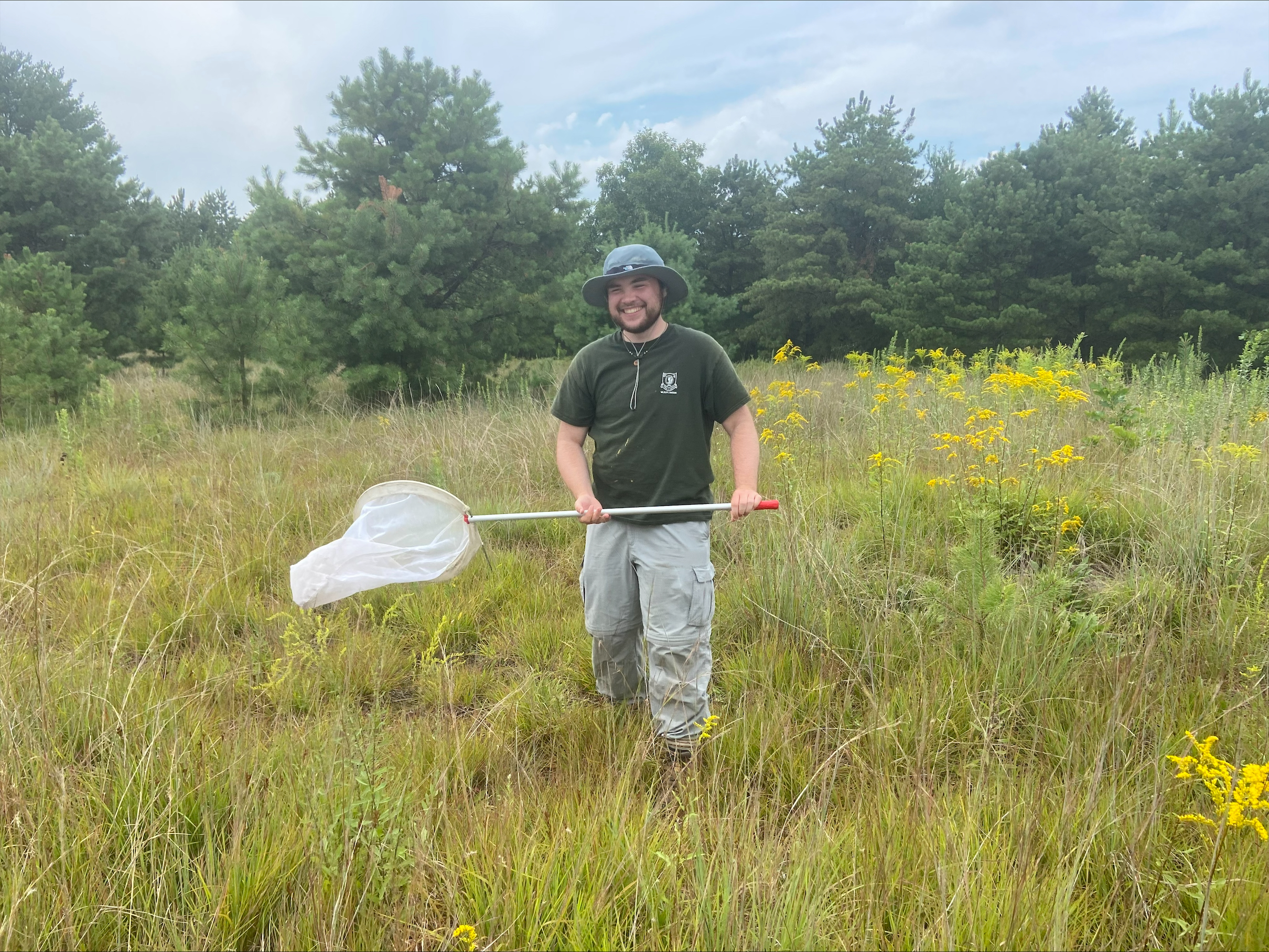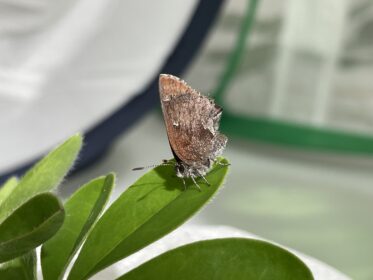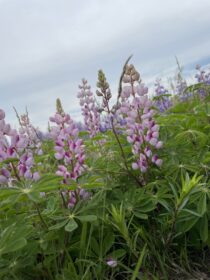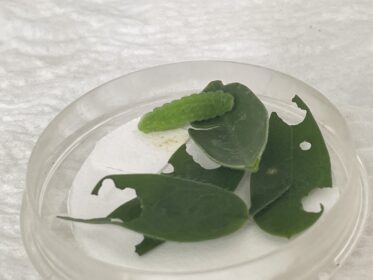Clark senior’s research takes wing


Will Smith ’25, M.S. ’26, has always felt intertwined with nature.
“It’s fun to put names to things you’re seeing, to point at a plant and say, ‘That’s Yarrow, that’s a Quaking aspen tree,’” says Smith. “It makes me feel more connected to the world, knowing that I have a relation to the earth and so does everything else around me.”
This passion for nature is at the center of Smith’s summer research in his hometown of Concord, New Hampshire, studying the effects of lupine flowers on the egg-laying behavior and overall performance of the frosted elfin butterfly, an endangered species.
New Hampshire is home to both the native Sundial lupine and non-native Large-leaf lupine — two species of the same genus. Typically, elfin butterflies feed on the Sundial. However, in the presence of both plants, the Elfin could choose to feed and lay eggs on either. Smith is examining how the butterfly’s interaction with the two plants can have different effects on larval and adult experiences. The work is supported by a Steinbrecher Fellowship.
Smith, an environmental science major with a concentration in conservation biology, is working at the Karner Blue Easement research facility, named after the state’s official butterfly. His typical day involves collecting specimens in acres of pine barrens and observing butterflies in a greenhouse lab. The frosted elfins gravitate to this part of the state because it’s populated with Sundial lupine, which prefers the low-nutrient, high-acidity soil from the fallen pine needles that blanket the forest floor.
The frosted Elfin is a small, light brown butterfly that gets its name from the translucent fibers on its wings, giving the appearance of a light layer of frost or dew. They travel 200 meters at most from their home. The species is unique because, unlike similar butterflies in the area, they only have one life cycle per year and spend their winters as pupae rather than as eggs.
“Catching the adult butterflies in the beginning was the hardest part because I didn’t know what to expect trying to find females in the wild,” says Smith, who ended up catching 32 elfins, not all females. “My coworkers helped in those early days. We were just running around with nets trying to catch them. It was a lot of trial and error.”

In the greenhouse, Smith put the butterflies into individual tents where they were provided with water, honey for nutrition, and either a Large-leaf lupine or a Sundial lupine. He observed the number of eggs the frosted elfins laid on the native lupine versus the non-native. The eggs were collected and put in a Petri dish to be monitored. As the eggs hatched into caterpillars, they were measured twice a week to determine how fast and healthily they developed.
Of approximately 180 eggs observed this summer, about 100 survived to become caterpillars and then pupae (they will stay in pupae form until next spring, when they hatch into butterflies). The next steps for Smith are to monitor and weigh the pupae and examine the data. He’ll note any differences in the health and behavior of the fully-grown butterflies based on their origin on the Sundial or Large-leaf lupine.
Smith got the idea for this research project while taking Animal Behavior with biology Professor Erin McCullough. In class, McCullough asked students to write a grant proposal about something that interested them in the animal kingdom. Smith wrote a proposal about examining behavioral differences in frosted elfin butterflies in Concord.
“I thought, ‘I actually could do this as a project,’” Smith recalls. The class assignment evolved into his Steinbrecher Fellowship.

Smith did wildlife conservation work with New Hampshire Fish and Game in summer 2023, which also inspired his research. His academic advisor, biology Professor Kaitlyn Mathis, and Heidi Holman of NH Fish and Game have been important mentors.
The Large-leaf lupine is a common ornamental plant that spreads easily. It’s been planted in highway corridors across the state by the New Hampshire Department of Transportation, part of an initiative to create more pollinator gardens.
Studies have shown that Large-leaf lupine increases overall pollinator abundance, which could allow migratory butterflies to travel further distances, Smith explains. However, it has not yet been proven how the non-native lupine impacts native pollinators, like the Elfin, who gravitate to native lupine species.
Smith intends to present his research at ClarkFEST Spring 2025 and will continue his research to inform his thesis for the 4+1 Accelerated Master’s Degree program in biology. Smith wants to apply his studies to a career in conservation, specifically the active rearing of at-risk species, ideally with a federal agency.


